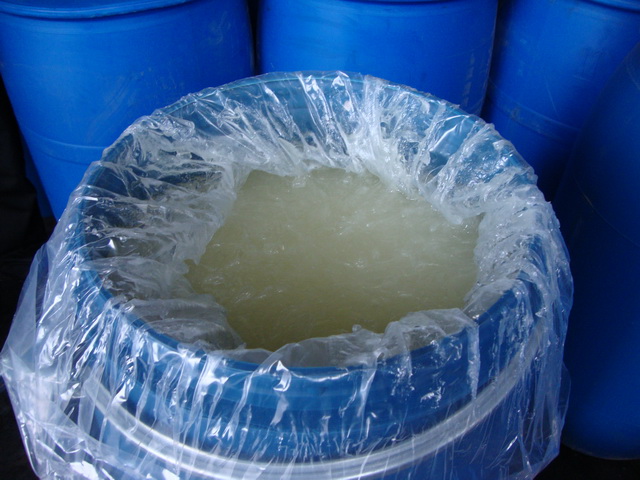Sodium Lauryl Ether Sulfate (SLES) is a common ingredient found in a multitude of household and personal care products. Renowned for its excellent foaming and cleaning properties, SLES plays a vital role in our daily hygiene and cleaning routines. This blog explores what SLES is, its benefits, common applications, and the safety and environmental considerations surrounding its use.
What is Sodium Lauryl Ether Sulfate?
Sodium Lauryl Ether Sulfate (SLES) is an anionic surfactant, which means it carries a negative charge that helps lift dirt and grease from surfaces and skin. It is derived from fatty alcohols (usually from coconut or palm kernel oil) through a process called ethoxylation, followed by sulfonation. This results in a compound that is highly effective at creating lather and breaking down oils.
Chemical Properties
- Chemical Formula: C₁₄H₂₉NaO₅S
- Appearance: Clear to slightly yellowish liquid
- Solubility: Highly soluble in water
- Foaming Ability: Excellent, producing a rich and stable lather
Common Applications of Sodium Lauryl Ether Sulfate
SLES is used in a wide range of products, making it an integral part of many everyday items:
- Personal Care Products: SLES is a key ingredient in shampoos, body washes, facial cleansers, and toothpastes. Its ability to create a rich lather makes it highly desirable for products designed to clean skin and hair.
- Household Cleaning Products: SLES is found in dishwashing liquids, laundry detergents, and other household cleaners because of its strong degreasing and dirt-removing properties.
- Industrial Cleaners: Used in higher concentrations, SLES is effective in industrial cleaning agents, including car wash soaps and heavy-duty degreasers.
- Cosmetics: It is utilized in various cosmetics for its emulsifying properties, which help blend water with oils and other ingredients.
Benefits of Sodium Lauryl Ether Sulfate
- Effective Cleaning: SLES is highly effective at removing oils and dirt, making it an excellent cleansing agent.
- Milder Alternative: Compared to Sodium Lauryl Sulfate (SLS), SLES is generally considered milder and less irritating to the skin, making it more suitable for personal care products.
- Foaming Agent: Its ability to produce a rich and stable foam enhances the user experience, providing a sense of cleanliness and thorough washing.
- Cost-Effective: SLES is relatively inexpensive to produce, helping to keep the cost of consumer goods down.
- Versatility: It works well in a wide range of products, from cosmetics to industrial cleaners.
Safety and Environmental Concerns
Despite its widespread use, there are safety and environmental concerns associated with SLES:
- Skin and Eye Irritation: While SLES is milder than SLS, it can still cause irritation in some individuals, particularly those with sensitive skin or allergies. Eye contact with SLES can cause mild irritation.
- Contaminants: During the ethoxylation process, there is a potential for contamination with ethylene oxide (a known carcinogen) and 1,4-dioxane (a suspected carcinogen). Reputable manufacturers use purification processes to minimize these contaminants, but traces can still be found in some products.
- Environmental Impact: SLES is biodegradable, but its production and use can contribute to water pollution. Ensuring environmentally friendly manufacturing processes and proper wastewater treatment is essential.
Moving Towards Alternatives
As awareness of the potential health and environmental impacts of SLES grows, there is an increasing demand for alternatives. Some of these alternatives include:
- Sodium Coco-Sulfate (SCS): A milder surfactant derived directly from coconut oil, used in place of SLES.
- Plant-Based Surfactants: Such as Decyl Glucoside and Coco Glucoside, which are derived from natural sources and are generally milder on the skin.
Conclusion
Sodium Lauryl Ether Sulfate is a powerful and versatile ingredient that plays a crucial role in many personal care and household products. Its effectiveness and cost-efficiency make it a staple in the industry, but it’s important to be mindful of its potential drawbacks, especially for those with sensitive skin or concerns about environmental impact. As the demand for gentler and more environmentally friendly alternatives grows, the industry continues to evolve, offering a broader range of options to meet consumer needs. Whether you choose products containing SLES or opt for alternatives, understanding this common ingredient can help you make informed decisions about your personal care and household products

